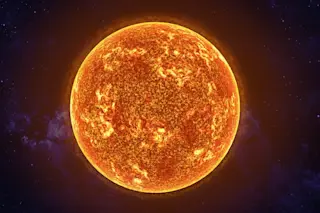April finds Leo the lion leaping above the eastern horizon at nightfall. Remarkably, this zodiacal formation actually resembles the beast it’s supposed to portray--a rare species in the sky’s largely imaginary zoo. The key part of the constellation is the sickle, a distinctive backward question mark that forms the heart and mane of the animal and leads Leo across the sky. At the base of the sickle shines Regulus, the lion’s brightest star. These nights this intense blue sun provides a vivid color contrast with the planet Mars, a brilliant orange guest in the Lion’s hind legs, and the sky’s brightest star after 8 p.m.
Mars and Regulus will perform a spectacularly tight conjunction this summer. But for now, watch how rapidly Mars changes position and brightness among Leo’s stars as Earth pulls away from the planet at the rate of half a million miles a day, following last month’s ...














